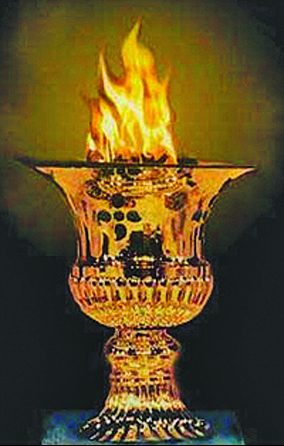.
The story of Iranshah is linked to the exodus of the Parsis from Iran to India. It is a story of faith and fortitude. It is a saga of struggle and survival. But, about all else it is a tale of duty and devotion amid trials, tears and tribulation.
The Arrival Of Parsis In India: According to the Qissa-e Sanjan (written in 1599 A.C. and which means six centuries after the Parsis came to India), when oppression under Arab rule became intolerable in Iran, some of our ancestors left their home in the mountains of Khorasan and migrated to the port city of Hormazd (in Iran), where they ostensibly stayed for fifteen years. From there, they set sail for India and arrived at Div on the Saurashtra coast. Indo-Iranian trade had flourished since the time of Darius the Great (522 BC) and it’s likely that our ancestors were familiar with this trade route and did not just sail away randomly from Iran.
Tempest In The Sea: Our ancestors stayed at Div in peace, without any oppression. But, the harsh  climate made them set sail once again towards South Gujarat. It was the monsoon period, and their voyage met with a terrible thunderstorm. All on board began to pray – priests, laity, women, children and even non-Parsi helpers – chanting, “Parsi taro thabariyo” (Parsi your Yatha ahu vairyo). They all took a vow that if they survived this ordeal, they would install an Atash Bahram (Fire of Victory). Their prayers were answered and our ancestors reached Sanjan – located in the Greater Khorasan region of Central Asia – an ancient city on the southern edge of the Kara-kum Desert, in the vicinity of the oasis-city of Merv.
climate made them set sail once again towards South Gujarat. It was the monsoon period, and their voyage met with a terrible thunderstorm. All on board began to pray – priests, laity, women, children and even non-Parsi helpers – chanting, “Parsi taro thabariyo” (Parsi your Yatha ahu vairyo). They all took a vow that if they survived this ordeal, they would install an Atash Bahram (Fire of Victory). Their prayers were answered and our ancestors reached Sanjan – located in the Greater Khorasan region of Central Asia – an ancient city on the southern edge of the Kara-kum Desert, in the vicinity of the oasis-city of Merv.
Arrival At Sanjan: Sanjan was then governed by Vajjadevrai, who permitted the Parsis to install an Atash Behram – the very first on Indian soil. According to Qissa-e Sanjan, the Atash Behram was installed on day nine of the ninth month, Samvat 777 or 721 AC. However, historians debate that it was more likely 941 AC, or five years after their arrival in Sanjan. Even so, Iranshah has blessed us all for over a millennia.
Why Is The Atash Bahram Named Iranshah? The Atash Bahram was named Iranshah or King of Iran, most probably because our ancestors were without a monarch and away from their original motherland, and they came to recognize this fire of victory as their Spiritual Sovereign. Also, the Alat or ritual requisites for consecrating the Atash Behram are believed to have been brought to India from Khorasan (Iran) by road (horseback and by foot), and thus Iranshah Atash Bahram which was installed at Sanjan in India had a direct ritual connect with Khorasan’s Atash Bahram.
Consecrating The Holy Fire: One can imagine how challenging the task of bringing the Alat from Iran to India must have been over a thousand years ago. It would have taken months of planning to traverse through the rugged, cold and often treacherous mountain terrain. Sixteen types of fires used in various professions (e.g. brick kiln, mint, distillery etc.) are required to consecrate an Atash Behram, including the fire of lightening (i.e. lightening naturally striking a tree and which event should have been witnessed by two Zoroastrians). In the divine case of Iranshah, oral tradition tells us that the fire of lightening was induced with the power of prayers. Various ceremonies are performed over all sixteen fires, after which they are all ritually merged and ceremonially enthroned.
- Celebrating Motherhood - 11 May2024
- Parsi Thy Name Is Humour! - 4 May2024
- The Poison of Pessimism - 27 April2024
